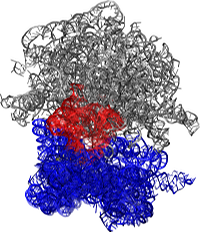
Call for papers
Multi-scale Modelling of Biosystems:
from Molecular to Mesoscale
Pacific symposium on Biocomputing 2011
January 3-7, 2011
The Big Island of Hawaii
Background

One of the new challenges of modern computational biology is the modeling of large biosystems. The understanding of these systems is key to solving many problems of therapeutic interest.
Complex biological phenomena must be modeled at different scales to simultaneously attain accuracy and economy. Biological processes at the mesoscale involve a large number of molecules and evolve on a wide variety of spatial and time scales, calling for a multi-scale approach. In molecular modeling for example, the disparity in scales on which events occur has prompted development of new techniques from quantum-based tools to coarse-grained approaches. The combination of these techniques in order to reach a mapping ranging from electron to cell in size, and from picosecond to second in time is still a challenge and the topic of considerable current work.
The purpose of this session is to focus on multi-scale techniques from molecule studies to cell or organism level. The emphasis is on: structure prediction, dynamics and sampling, mesoscale modeling, molecular assemblies, aggregation and analysis of structural interactions and structure and systems biology. This session should benefit from recent progress in multi-scale molecular modeling and bring computer science and biology communities together to enter the mesoscale era.
Session Topics
Multi-scale modeling for biological macromolecules has been a very active field in the past few years, where biological macromolecular modeling is approached at various levels of resolution from atomic to residue to molecular and beyond. For example, a simulation can be carried out at any level of resolution, or different levels can be used for the same problem either serially or in parallel. Moreover, information gained at high resolution such as protein-protein, protein-DNA interactions may even be integrated into models at systems level to provide valuable information such as in the structural systems biology.
Our session invites submissions of different aspects of multi-scale modeling of biological macromolecules covering a range of topics such as:
- Structure Prediction
- Dynamics and Sampling
- Mesoscale Modeling
- Molecular Assemblies and Aggregation
- Analysis of Structural Interactions.
Session Co-Chairs
Julie Bernauer
INRIA
julie.bernauer@inria.fr
Samuel Flores
Stanford University
scflores@stanford.edu
Xuhui Huang
Hong Kong University of Science and Technology
xuhuihuang@ust.hk
Seokmin Shin
Seoul National University
seokmin.shin@gmail.com
Ruhong Zhou
IBM Watson Center
ruhongz@us.ibm.com
General Information on Papers and Presentations
The scientific core of the conference consists of rigorously peer-reviewed full-length papers reporting on original work. Accepted papers will be published in an archival proceedings volume (fully indexed in PubMed), and a number of the papers will be selected for presentation during the conference. Researchers wishing to present their research without official publication are encouraged to submit a one-page abstract, and present their work in a poster session.
Important Dates
- Paper submission deadline: July 12, 2010 Deadline extended to July 15 11:59pm PT.
- Notification of paper acceptance: September 10, 2010
- Final paper deadline: September 20, 2010
- Poster abstract deadline: November 1, 2010
- Meeting: January 3-7, 2011
Paper Formatting and Submission
All papers must be submitted in electronic format to the paper management system.
The only acceptable file formats are Adobe Acrobat (*.pdf) and postscript (*.ps). Attached files should be named with the last name of the first author (e.g., altman.pdf or altman.ps). Hardcopy submissions or unprocessed TeX or LaTeX files or electronic submissions not submitted through the paper management system will be rejected without review.
Each paper must be accompanied by a cover letter. The cover letter must state the following:
- The email address of the corresponding author
- The specific PSB session that should review the paper or abstract
- The submitted paper contains original, unpublished results, and is not currently under consideration elsewhere
- All co-authors concur with the contents of the paper
Submitted papers are limited to twelve pages in the official PSB publication format. Please format and submit your paper according to these instructions, which can be found at http://psb.stanford.edu/psb-online/psb-submit/. If figures cannot be easily resized and placed precisely in the text, then it should be clear that with appropriate modifications, the total manuscript length would be within the page limit.
Color pictures can be printed at the expense of the authors. The fee is $500 per page of color pictures, payable at the time of camera ready submission.
Contact Russ Altman psb.hawaii@gmail.com for additional information about paper submission requirements.